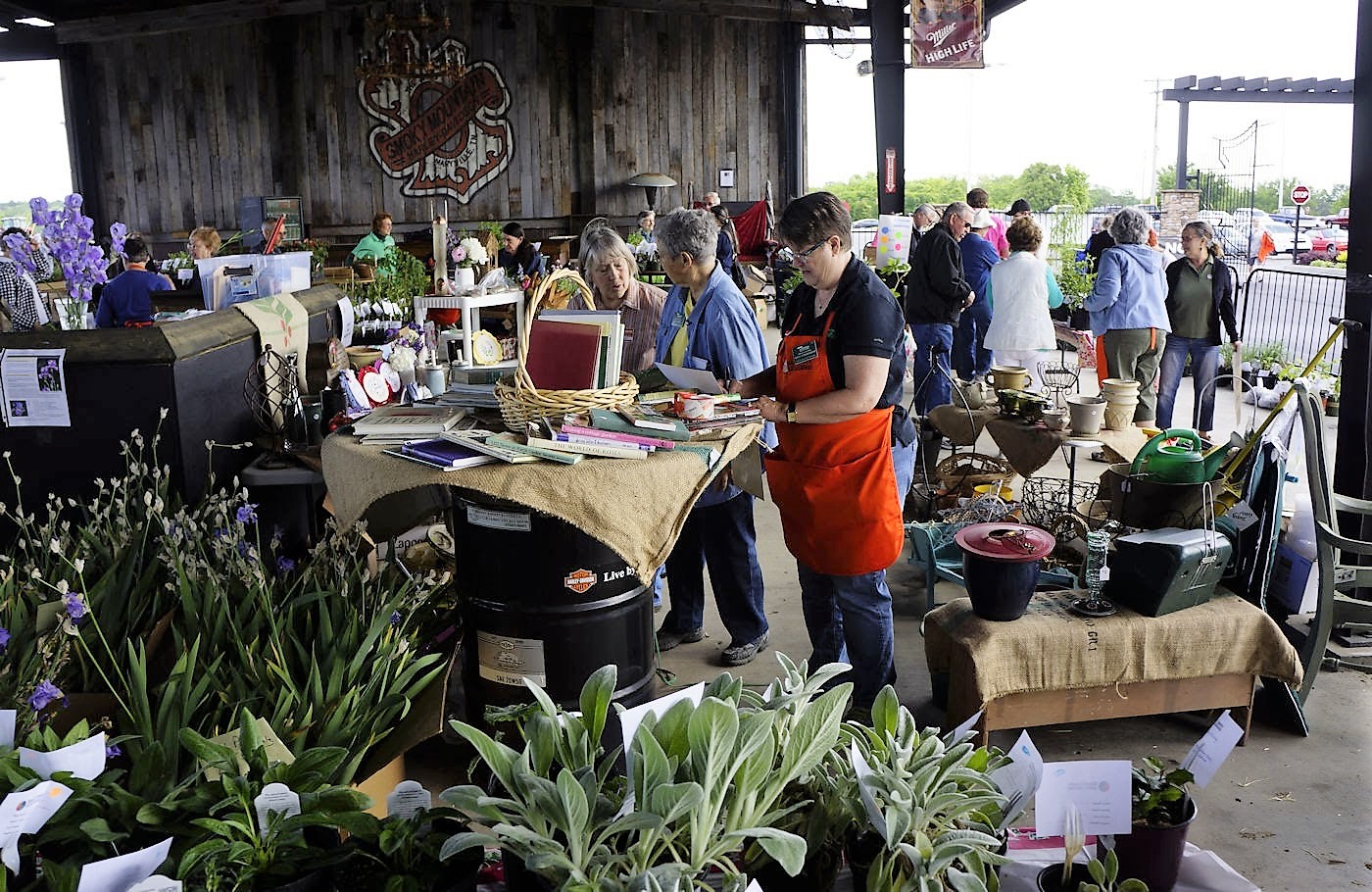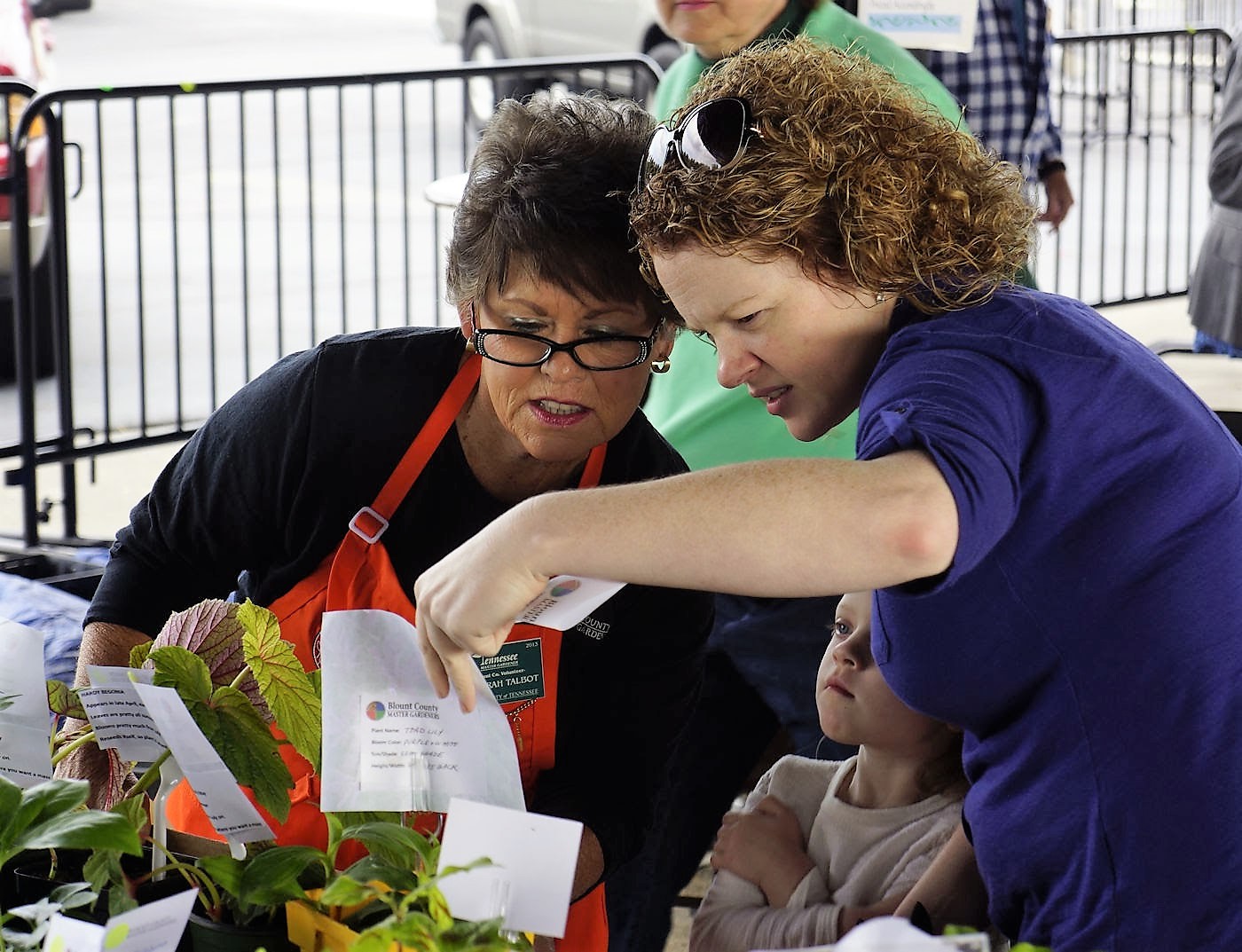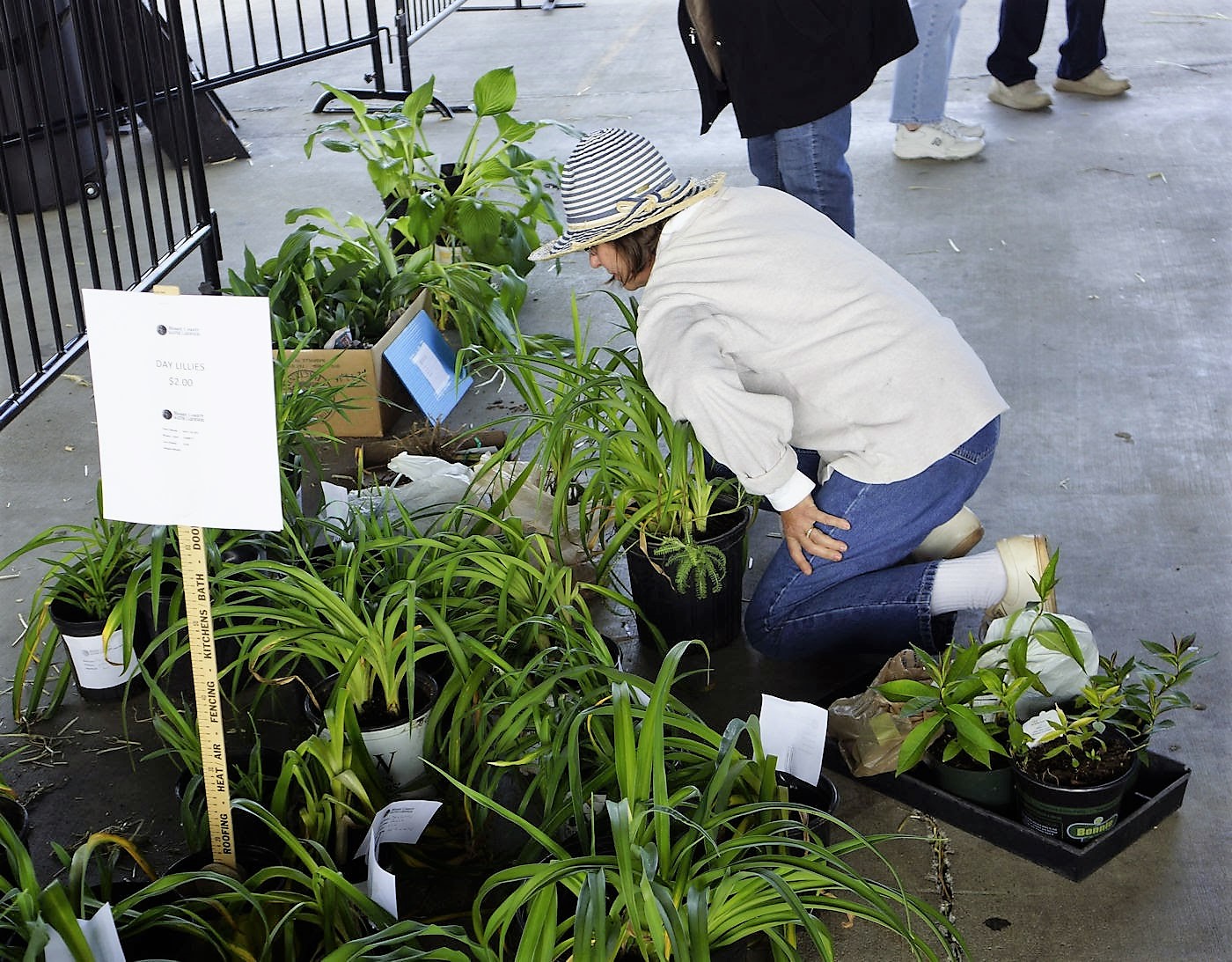Spring Plant Sales
Spring is in the air and our gardens are awake and growing. We've had lots of rain to erase all thoughts of last year's drought. We've spent the winter months anticipating warm days and sunny skies, and we can't wait to get out and see all the colorful flowers once again! Perhaps you've been buying seeds for that great veggie garden or saved seeds from last year and your greenhouse bursting with new growth. Garden sales and swaps are now enticing us to add to our collection of green things. Then, we remember being overwhelmed with watering, weeding, and more watering and we vow not to do that again. So now is a good time to think about what we need and what we should be planting and have a plan before we hit those sales. I will admit that I'm biased, but my favorite sale is the Blount County Master Gardeners Annual Plant Sale. I've always come away with at least one new plant I haven't tried before. It is held at the Blount County UT Extention Office, 1219 McArthur Road, Maryville, TN 37804. Plant Sale. The Master Gardeners have been busy potting up some great finds from their amazing gardens and preparing all sorts of crafts and garden knick-knacks. They'll have an "Ask the Master Gardener Table" so you can stop in and ask all the questions you've been saving, or get great advice when you buy the plants they'll have for sale. Please mark it down on your calendar and come by and see us there!
Just as a cook needs to plan meals before shopping for the right groceries, a gardener needs to know what he or she wants from their garden and what the garden can handle before shopping for plants. The gardener needs to know soil conditions, amounts of sunlight and other less obvious physical details about the garden. Additionally, existing plants may also determine what can be added. Make a Map (or maps for multiple garden spaces) Make a careful drawing of where all the gardens may be, whether it is one small one or many big ones and everything in between! Scale helps but doesn't need to be exact. If the garden is established, note existing trees, shrubs. You will want to add information to this diagram as we continue exploring all the factors that go into deciding what plants will eventually be purchased. Get Soil Tests Done (and Learn About What Kind of Soil you have) Having a soil test done is easy. Go to the Cooperative Extension Office (219 Court Street, Maryville TN 37804) to obtain the soil sample kit(s), follow the direction on how to sample your garden and send it in to the lab. There is a modest charge for the testing, but the information will help you determine if you need to amend your soil and if fertilizer is needed for the kind of plants you'll be growing.
The best way to determine the amount of sunshine is to spend a day or two checking hourly where the sun is shining. It's as simple as that! Write down your observations and calculate the hours of sunshine. The general rule of thumb is as follows: Full sun plants require a minimum of 6 hours of complete sunshine. Partial Sun plants require at least 4 hours and up to 6 hours of direct sunshine, shade is preferred in the afternoon. Partial Shade is similar but tends to need only four hours and prefers afternoon shade. Partial Sun and Partial Shade often overlap. Full Shade plants tolerate early morning sunshine very well. Most shade plants prefer dappled shade, a few can handle deep shade. Knowing your Heat Zone (see references) will narrow down how hot your garden can get and what plants you can plant beyond hours of sunlight alone. Know the Moisture Levels for Each Garden Some plants prefer moist soils like those found at the edge of streams and ponds. Others will get root rot if they are exposed to water around the roots for more than a few hours. Plant tags should tell you moisture requirement for the plant. If there no information is provided you can assume some form of regular watering and good drainage will be needed. But always look up your plant or ask a Master Gardener to make sure you understand its needs. Drought tolerant does not mean that the plant does not need watering. All seedlings and small plants need regular watering in their first year and only mature plants labeled as drought resistant can withstand longer periods of dry conditions. All plants do better with some watering if we don't get rain for a week or more. Know Your Plant Hardiness Zone Some plants will not live through the winter. They are either annual or tender perennials. If you are planning for your garden to return, you may want to make sure your plants will survive our average winter conditions by knowing the Hardiness Zone (see references below) and plant type. What Existing Plants Are Present Unless you plan on removing existing landscape, you will need to take into consideration plant and shrubs already in the garden and larger trees that shade it. Trees like the Black Walnut produce a chemical in their roots that prevent many garden plants from growing and thriving around the base of the tree. You will need to find plants that are tolerant of this chemical if you have this tree near the garden. A good resource can be found here: http://extension.psu.edu/plants/gardening/fact-sheets/trees-shrubs/landscaping-and-gardening-around-walnuts-and-other-juglone-producing-plants Putting it All Together
In each section of the garden map you will need to write in the pertinent information. Some gardens will be drier on one side, or have much more sun on one end or the other. Note the changes and about where they are. Add in any standing water problems, erosion problems and anything that may adversely affect plant growth. One such example is plants such as the Black Walnut Tree that send out toxins to keep away the competition. Plants usually are listed as needing full sun, partial sun or shade. In addition they may need to be in or near water, tolerate occasional 'wet feet' or need well drained soil that is never wet. Sometimes plants do well only in sandy soil or loam and cannot tolerate clay. This information is usually found in a catalog description or on a plant tag. An example of a specific combination would be plants for ponds, rain gardens and near streams would need to thrive in moist conditions and tolerate standing water, at least occasionally. You will also need to determine if the plants will be in full sun or shade for most of the time. If you have very specific needs, such as livestock friendly (there are garden plants that can be dangerous to cattle), you'll need to find plants that are not toxic to horses or cattle. In other cases you may be in an area overrun with deer, and will need to concentrate on finding deer resistant planting (we've got a great article and resources coming soon!!).
Start with your list of needs and if you have found examples of a good fit write them in a list. Keep it organized by plant needs. Now head to the community organization plant sales in your area. Afterwards check out other sales and local nurseries for the plants most similar to your list. Ask questions to find the plants on your list or good substitutes. Most of the Master Gardeners at the sale will be happy to help you find great plants to fit your needs. Just ask! There will be tools and plant supports and all sort so helpful stuff there to make your garden pretty and your garden work much easier. One last little hint before you head out! Over buying can be a temptation whether you are an experienced hand or a new gardener. Always remember to space the plants according to the description on the tags. If your plants can't spread out and have a little air circulation they will become diseased more easily. It is better to come back the next year if you need more plants to fill in the garden. A 12 inch diameter plant will need around 8 inches from where you plant it to each side to have room to grow and still have air to circulate. The gaps may look big at planting time but by August you will wonder if you left enough space!
References for hardiness and Sustainable Gardening: http://planthardiness.ars.usda.gov/PHZMWeb/ http://ahsgardening.org/gardening-resources/gardening-maps/heat-zone-map |


 The Importance of Planning - by R. Lieber
The Importance of Planning - by R. Lieber Finding the Right Plants for Your Garden
Finding the Right Plants for Your Garden Know How Much Sun Each Garden Area Gets
Know How Much Sun Each Garden Area Gets Determining What Plants Fit the Garden
Determining What Plants Fit the Garden Going Plant Shopping
Going Plant Shopping